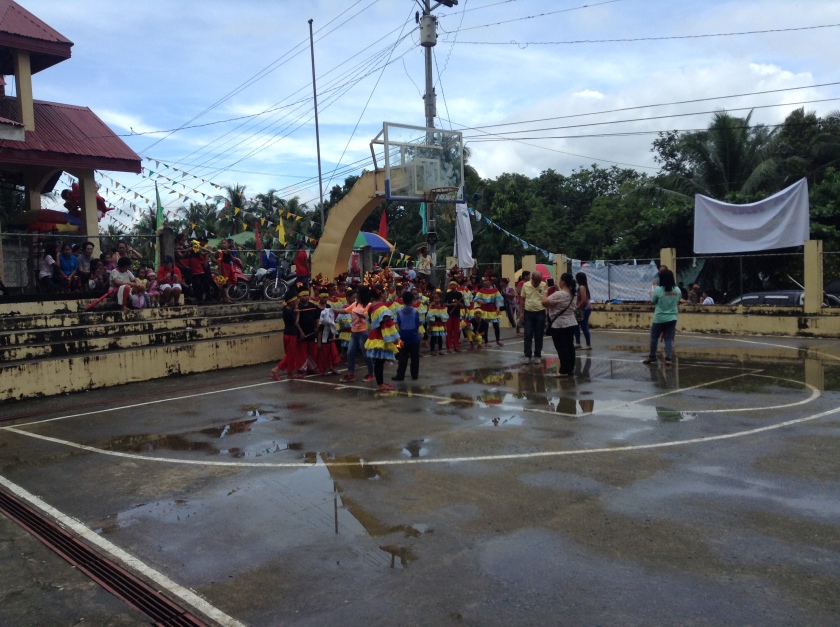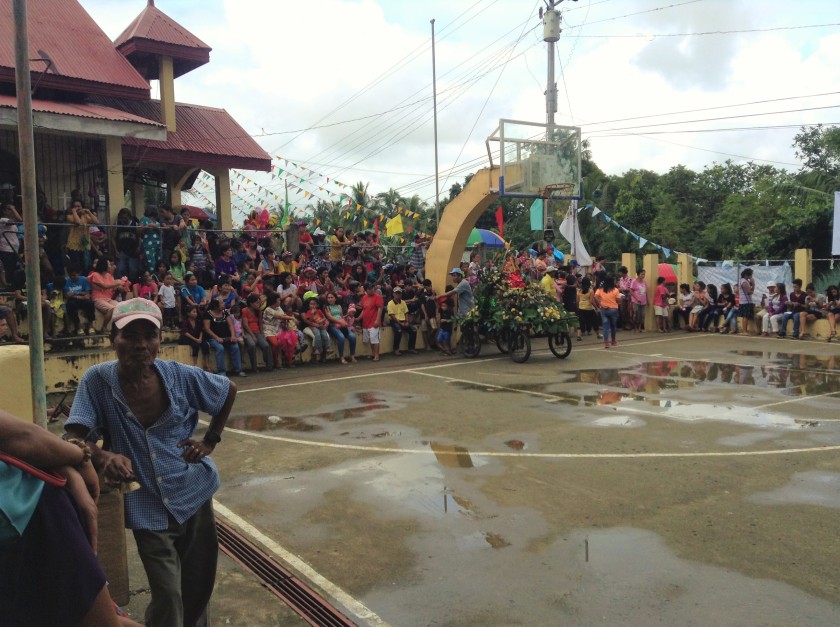This post is part of Blogging Abroad’s 2017 New Years Blog Challenge, week three: Cultural Differences.

I was having a bit of trouble talking about Filipino culture as a whole, so instead, I decided to write a short list of things/concepts that are common in the Philippines, but that I wouldn’t find at home.
- The Tabo
Like many places in the world, the Philippine septic system is not set up to handle toilet paper. In other words, YOU CANNOT FLUSH IT! When I visited Peru, this problem was solved by small trash bins that lived next to every toilet and were emptied every day. I have found that this is also the case in most public comfort rooms (bathrooms) in the Philippines, except it is strictly BYOTP (Bring Your Own Toilet Paper). However, in private CRs (comfort rooms) another method is used. In every home, there exists either a tiny spray hose behind the toilet (similar to what you would find on some kitchen sinks in the US) or a small plastic bucket – A TABO! Now, the tabo is not just for your toilet needs, it also functions as your bucket shower water dispersal unit (in other words, it’s how you pour the water on your body). It takes a while to get used to, but many of my fellow Volunteers have said that they now prefer the tabo to TP, as it is easier to clean with soap and water than it is with a wadded-up piece of dry paper. This is my tabo (puppy for scale):
- The Three-Party System
Direct confrontation is not common in the Philippines. If you have a problem with a friend or coworker, you don’t talk to them about it. Instead, you tell a mutual friend, and they help to resolve the issue. This is known as the “Three-Party System”(mostly because three-parties become involved in the conflict). If you address the situation directly, it can come off as aggressive, or mean, so it’s much better to ask a third person to help.
- The Squat
The ground is a dirty place. It can also get pretty muddy when it rains for almost a month non-stop, and getting out stains is hard when you do all your washing by hand. For these, and other reasons, many Filipinos choose to squat instead of sitting on the ground or floor. I have seen a two-year-old squat to watch a dancing routine and I’ve seen a seventy-year-old woman squat at her vegetable stand in the market when there were no customers near-by. I’ve even done it myself to give my back a break on laundry day. If I had to pick a National Sitting Position for the US, it would probably be criss-cross-apple-sauce (or cross-legged). For the Phillippines, the National Sitting Position is definitely the squat.
- Kasama/Kauban Culture
Whenever I am planning to go somewhere, I am asked “Kinsay imong kauban?” or “Who is your companion?”. Where ever you go, you need a kauban or kasama (a companion) and it is very unusual to go to an event, or even walk to the store alone. This can be pretty tricky at times for me, as sometimes I just want to be alone. Luckily, a dog can count as your kauban, so I’ve been getting this question much less in the last month and a half.

The best kind of kauban - Filipino Time
I’m sure many of you have heard of Island Time – which I would define as the tendency of events held on islands to start a bit late. Some aspect of this may relate to the laid-back nature of island life, but I’m not really sure. I experienced this in the Caribbean when I was part of an archaeological dig on the island of Anguilla, but the Philippines is an entirely different ball game. As the Philippines is an entire nation composed of islands, they stepped up the game a bit. For the most part, things here start whenever they start, and the time on the invitation/program is an estimate. I have learned to go with the flow, and not rush to get ready for an event (unless I’m one of the people leading it). If an event is “scheduled” to start at six, I now aim to leave my house around six, because if I arrived before six, I would likely be waiting alone for a while. As most events are held outside in my town, the weather also factors in to the equation. If its raining, the event will probably start after the rain. One of my friends told me about a christening that was supposed to start at 10:00am and didn’t start until 4:00pm. Even in extreme cases like that, it’s ok; there is always something to do while you wait. Ultimately Filipino Time just means that you have to be flexible.

When the event was supposed to start 
When the event actually started (about 30 minutes later)







One thought on “Five Random Filipino Things”